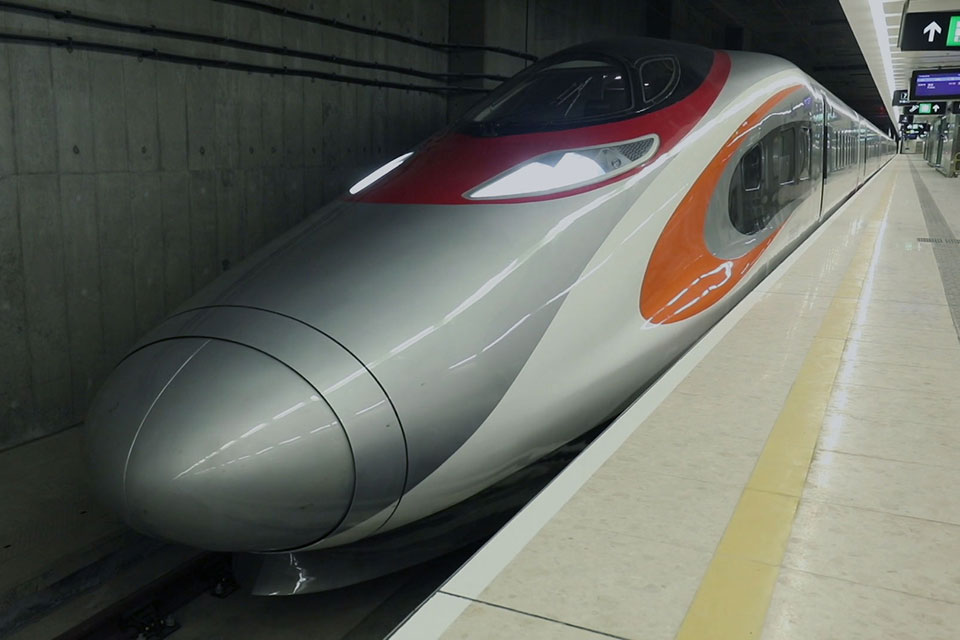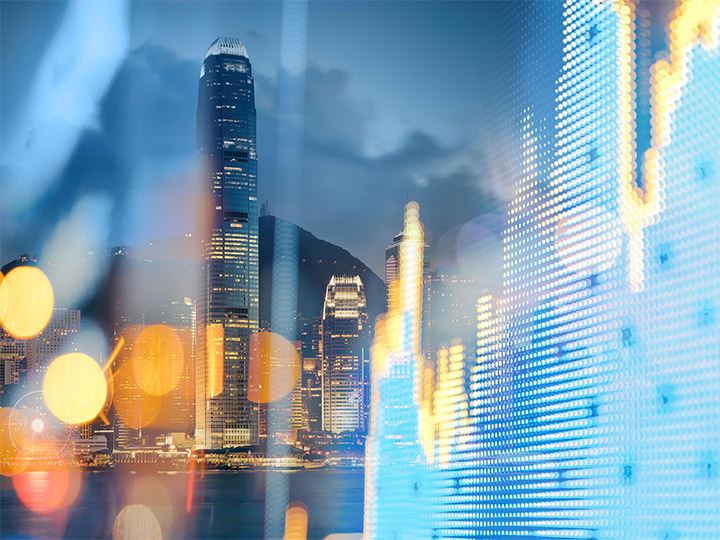Going the distance
A 55-kilometer network of roads, tunnels, bridges and boundary crossing facilities combine to create the world's longest bridge-tunnel sea crossing. The engineering marvel stretches across the Pearl River Estuary, connecting Hong Kong with Macao and the neighboring city of Zhuhai in the Mainland of China.
Appropriately known as the Hong Kong-Zhuhai-Macao Bridge (HZMB), the megastructure is a key element in the creation of a Greater Bay Area city cluster, covering 11 dynamic cities including Hong Kong, Macao and nine cities in Guangdong province.
The HZMB, together with a newly-opened Express Rail Link that plugs into the national high-speed rail network; the first transpacific undersea fiber optic link between Hong Kong and Los Angeles in the United States; and ongoing construction of a Three-Runway System at the city’s international airport is helping to secure Hong Kong’s reputation as a hyper-connected entryway between China and the rest of the world.


Completing these mega infrastructure projects is a huge engineering achievement. The ambitious HZMB project involved the construction of artificial islands, viaducts and a sub-sea tunnel approximately seven kilometers long. Similarly, the Hong Kong Section of the Guangzhou-Shenzhen-Hong Kong Express Rail Link (XRL), which connects Hong Kong to the 25,000-kilometer national high-speed rail network, has been completed and recently opened on September 23. The XRL will also enable Hong Kong to tap into the synergy and opportunities brought about by the Guangdong-Hong Kong-Macao Greater Bay Area.
And the extent of Hong Kong’s infrastructure projects doesn’t stop there.
Land-based cross-boundary connections will be further enhanced with the completion of the longest twin-tube road tunnel in Hong Kong – the Lung Shan Tunnel. The 4.8-kilometer tunnel is part of the 11-kilometer connecting road, which ends at a new Liantang/Heung Yuen Wai Boundary Control Point. This boundary crossing will connect the highway network in Hong Kong and the Mainland, and is expected to greatly reduce the travel time between Hong Kong and eastern Guangdong, Fujian and Jiangxi.
Hong Kong International Airport (HKIA) is already one of the busiest in the world, serving over 72 million passengers and handling more than five million tonnes of cargo and airmail in 2017. Opened in 1998, the airport is now near full capacity. Amidst demand for more flights and growing competition from airports in the region, construction on the Three-Runway System at HKIA started in 2016, and the work will take about eight years to complete. The scale of the project roughly equates to building an entirely new airport, which will sit on reclaimed land.
The Hong Kong SAR Government invests boldly in infrastructure development, some 15 percent of total expenditure in 2018-2019. The investment reflects confidence in and anticipated economic benefits expected to be derived from increased connectivity, especially within the Guangdong-Hong Kong-Macao Greater Bay Area as well as globally. This confidence seems well placed, considering the Greater Bay Area comprises a region that is home to nearly 70 million people and generates GDP of about US$1.5 trillion, comparing favorably with other bay areas such as San Francisco Bay Area and Tokyo Bay Area.
The Hong Kong SAR Government invests boldly in infrastructure development, some 15 percent of total expenditure in 2018-2019.
The Hong Kong-Zhuhai-Macao Bridge cuts travel time from Zhuhai to the Hong Kong International Airport from four hours down to 45 minutes.
How will this mega city cluster actually work? Where are the benefits? The tourism sector is one likely beneficiary. The HZMB cuts travel time from Zhuhai to HKIA from four hours down to 45 minutes. Hong Kong and Macao already have thriving tourist sectors, but experts believe the bridge will allow for greater flexibility of travel itineraries and that they can increase tourist arrivals by promoting the whole region as a multi-destination travel market.
A hub with greater connectivity
With mega infrastructure projects, including HZMB, linking the Greater Bay Area, the region is expected to become an even more competitive hub for advanced manufacturing, innovation, finance, shipping, and trade. Most areas in the western Pearl River Delta are within a three hour radius of Hong Kong after the commissioning of HZMB, creating attractive opportunities for overseas investors and growth potential for trade and logistics.
These days, physical connectivity is nothing without digital connectivity. The Pacific Light Cable Network (PLCN) will be the first to directly link Hong Kong with the United States. The 12,800-kilometer subsea cable will transmit 120 terabytes of data per second, meeting the tremendous demand for telecommunications services between Asia and North America, further cementing Hong Kong’s position as a prime location for setting up data centers in the Asia-Pacific region.
A timely development
There are high expectations of the Greater Bay Area and of Hong Kong’s role as a hyper-connected gateway to the rest of the world. And the concept of a Bay Area in China, that is on par with similar economic clusters in places like Tokyo, San Francisco and New York comes at an interesting time. It was 40 years ago that China’s opening up and reform policies were introduced. Since then, China has become the world’s second-largest economy with Hong Kong being the single largest investor in the Mainland. Looking ahead, further economic integration of the Greater Bay Area will bring Hong Kong’s success to the next level.




